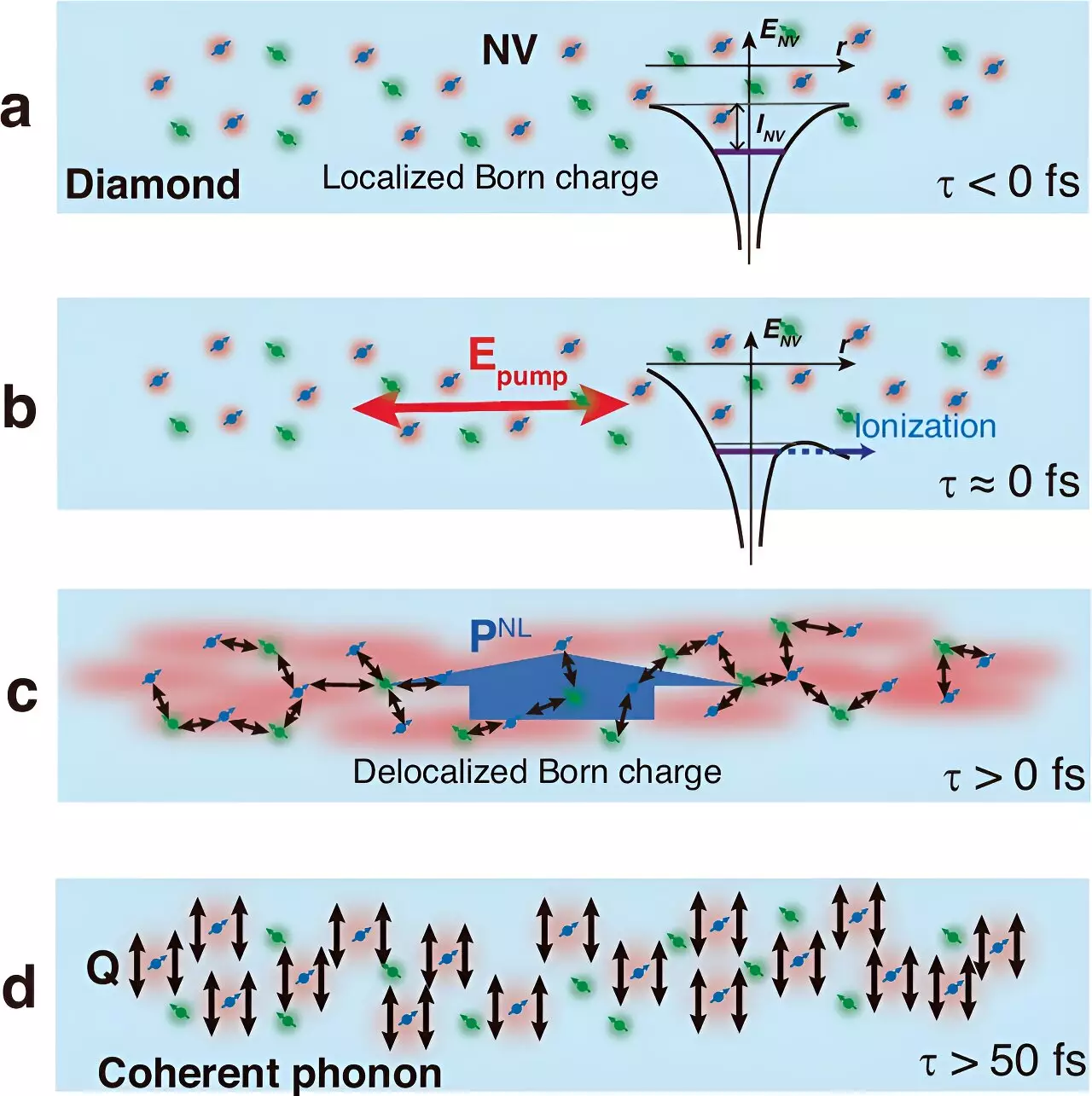Recent advances from a research team at the University of Tsukuba have shed light on the intricate dance of polaron quasiparticles, which arise from the dynamic interplay between electrons and their surrounding lattice vibrations within diamond crystals. This groundbreaking study reveals the cooperative behavior of these quasiparticles specifically around nitrogen-vacancy (N-V) centers in diamonds—a finding that promises to enhance our understanding of quantum materials. The researchers employed ultrashort laser pulses to irradiate diamond samples embedded with color centers, meticulously analyzing the reflectance changes to gain insights into this complex interaction.
Diamonds, traditionally valued for their aesthetic qualities, are coming to the forefront of quantum technology research, primarily due to the peculiar properties of N-V centers. Formed when nitrogen atoms substitute for carbon atoms adjacent to vacancies, N-V centers are more than just structural defects; they serve as critical components for advanced sensing technologies. Their sensitivity to external factors such as temperature variability and magnetic fields is of particular interest. The unique ability of N-V centers to respond to changes in their quantum states opens up new avenues for developing high-precision sensors for various applications, ranging from medical imaging to environmental monitoring.
One of the primary challenges researchers face is understanding how lattice distortions affect the energy levels of electrons in the N-V centers. This study specifically sought to address the interaction between these electrons and the lattice vibrations resulting from external stimuli. By employing nanosheets with a controlled density of N-V centers positioned close to the surfaces of high-purity diamond crystals, the researchers successfully observed significant enhancements in lattice vibrations—reportedly increasing amplitude by approximately thirteen times, a fascinating outcome considering the low density of N-V centers compared to other types of defects.
The implications of this research extend far beyond basic scientific discovery. The altered charge states of N-V centers, determined through advanced first-principles calculations, indicate a complex interplay of positive and negative charge distributions. This establishes a foundation for the identification of polaron quasiparticles—a new type of quasiparticle that combines free carriers with a phonon cloud. The emergence of Fröhlich polarons in diamond, which had been deemed non-existent in this material for nearly 70 years, signifies a notable shift in our understanding of electron-lattice interactions and the potential for quantum sensing applications.
This significant advancement in exploring polaron behaviors within N-V centers in diamond crystals concludes with exciting prospects for the field of quantum technology. As the researchers underscore, by harnessing the properties of polarons in conjunction with N-V centers, future innovations in quantum sensors could redefine precision measurement and environmental sensitivity. The potential applications of this research are vast, paving the way toward developments that integrate quantum mechanics with real-world applications, embodying a new era where diamond could be at the forefront of technological advancement and materials science.


Leave a Reply